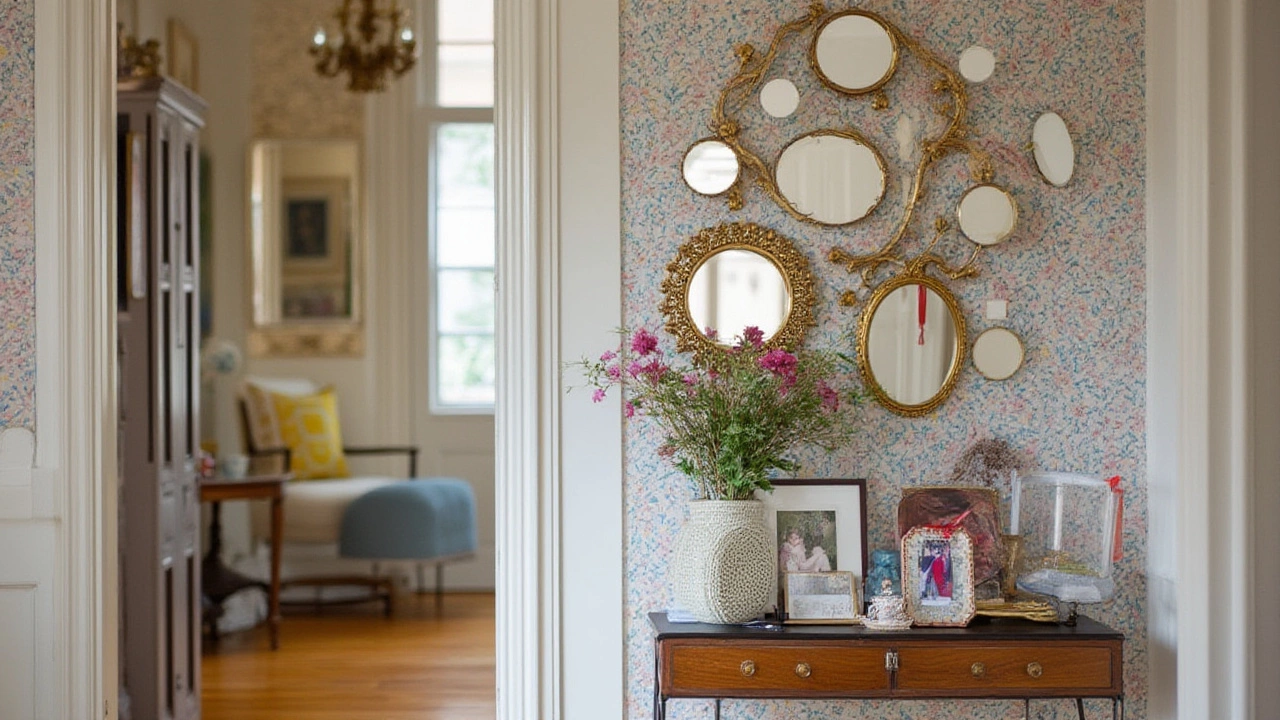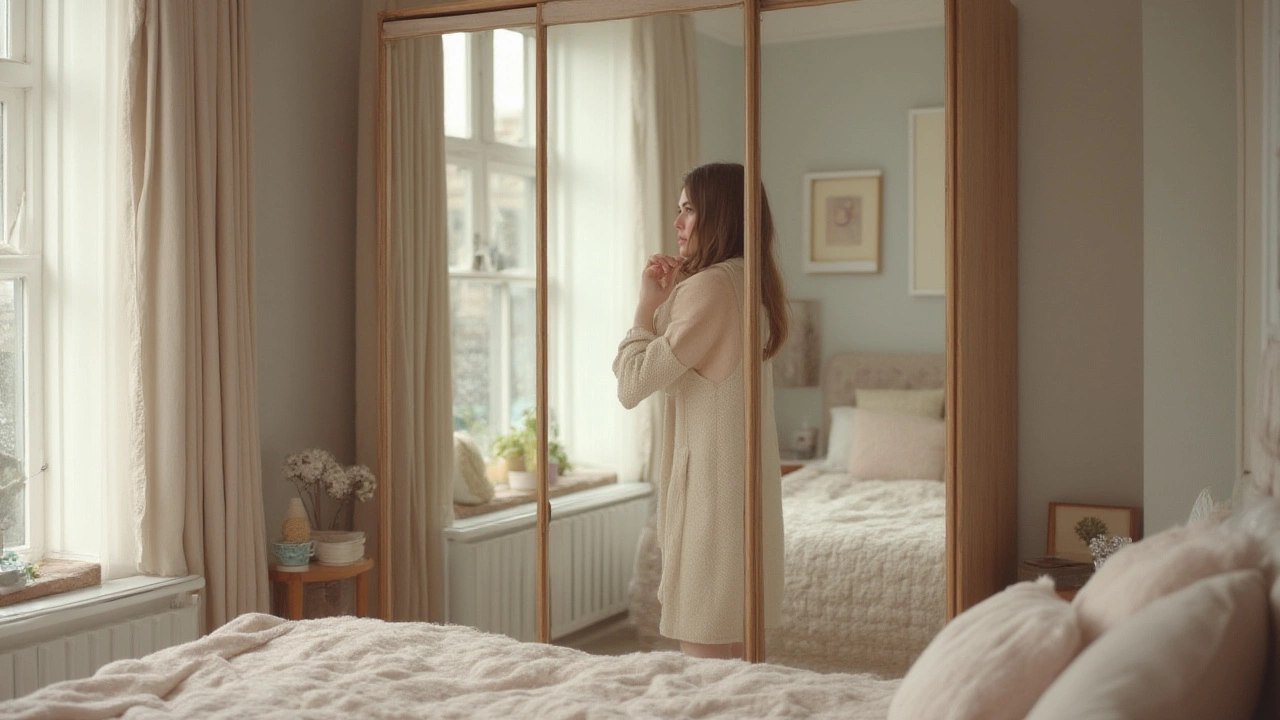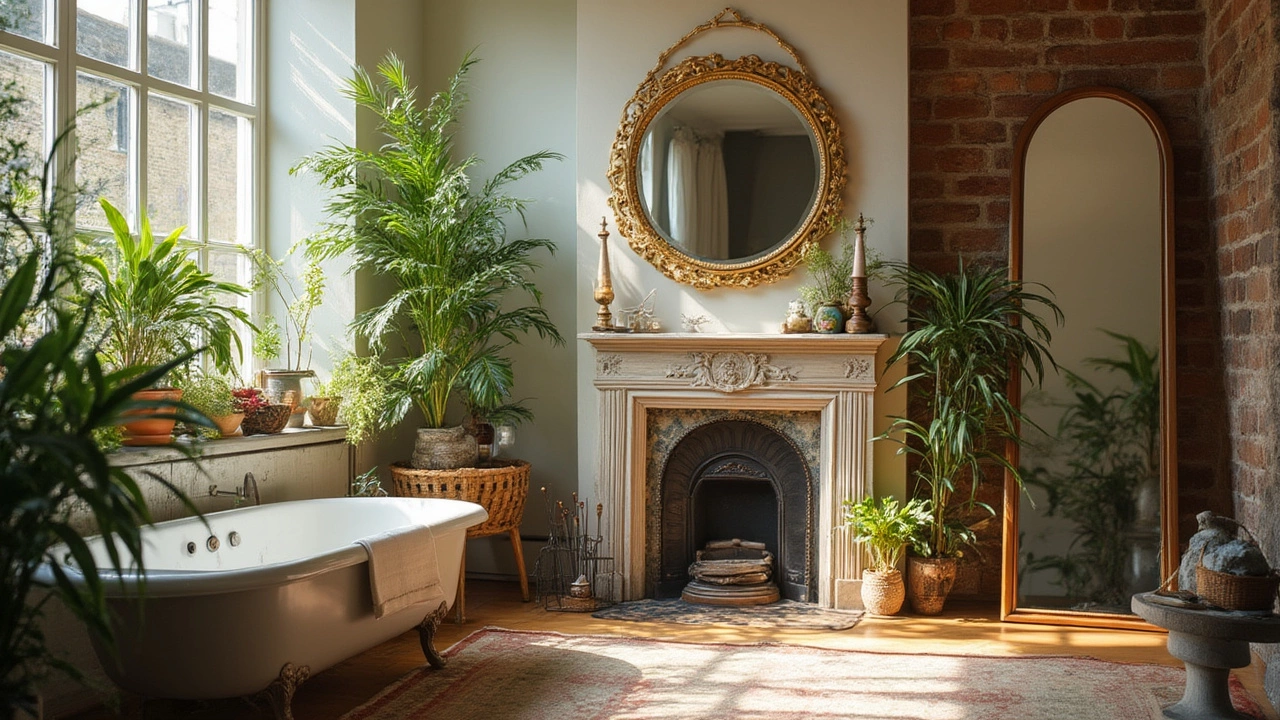Ever noticed how mirrors have a weird kind of power over a room? One mirror can change the whole feel—make a bathroom look double its size, drag more sunlight into a hallway, or turn a bedroom corner glam overnight. But here’s the catch: not all mirrors are up for the same job. That’s why picking the best mirror type can feel like a wild guessing game. I can't tell you how many hours I've spent in stores, staring between frameless rectangles and ornate ovals, only to get home and realize I picked a dental-office vibe for my bedroom. But trust me, there are some clear rules (and juicy design secrets) that make finding "the one" way easier. Let's straighten out the glass between myth and reality.
Knowing the Mirror Types: What Are Your Options?
First up, let’s clear up what we even mean by “type of mirror.” It isn’t just about shape (although shape matters, especially when mirrors are moonlighting as art). We’re talking about the way mirrors function, what makes up the back layer—like glass vs. acrylic—plus style, mounting, and even where you’re supposed to hang them. Start with the classics: wall mirrors, floor mirrors, and vanity mirrors. Wall mirrors are the poster children—anywhere you slap them up, they’ll play along, from hallways to living rooms. Floor mirrors are those big show-offs that lean on the wall and bring drama (plus, they’re selfie magnets). Then there are vanity mirrors, which you’ll spot in every bathroom but secretly wish you had by your front door for those last-second makeup checks.
Getting a little nerdy for a second: the backing of the mirror actually makes a huge difference. Most regular mirrors use silver nitrate behind the glass—that’s what gives that crisp, clear reflection. Some cheaper options (especially frameless ones from budget stores) might use aluminum, which can have a cooler, bluish tint. Acrylic mirrors, which are pretty lightweight and shatter-resistant, sound great for kids’ rooms but can get wavy, so you don’t want those for places where you do makeup or want to see an honest version of yourself.
Want a quick cheat sheet? Here’s a mini breakdown in the table below:
| Mirror Type | Best For | Pros | Cons |
|---|---|---|---|
| Wall Mirror | Living, hallway, entry | Versatile, lots of styles | Needs proper mounting |
| Floor Mirror | Bedroom, dressing room | Full-length view, dramatic | Heavy, uses floor space |
| Vanity Mirror | Bathroom, dressing table | Detailed view, magnification options | Usually smaller, focused use |
| Acrylic Mirror | Kids’ rooms, outdoor | Lightweight, safe | Can distort, scratches easily |
| Framed Mirror | Decor feature anywhere | Style focus, defines space | Heavier, often pricier |
| Frameless Mirror | Bath, minimalist bedrooms | Sleek, modern | Less durable at edges |
If you’re after something fancy, consider antique or vintage mirrors. Those usually use mercury or tin (not exactly the safest, but gorgeous), and bring instant character with all their weird, speckled aging. For safety, though, modern glass wins. If tech is your thing, the smart mirrors trending in 2025—think light-up, fog-free mirrors with Bluetooth—promise a futuristic start to your day. Fun fact: the global mirror market size hit $35 billion by 2024, and surprising no one, bathroom mirrors are still the best sellers.
Don’t skip the "mirror coating" details. For damp areas (hello, steamy bathrooms), spring for mirrors labeled “moisture resistant.” These have special coatings to stop that frustrating black edge rot. And if you love a lit mirror, LED borders are super popular now and make a difference, especially on dark mornings.

Function Comes First: Matching Mirror Type to the Space
Shopping for a bathroom? There’s a reason bathroom mirrors are usually simpler, with clean, crisp edges and moisture-resistant frames. Fog and water are tough on that shiny surface, which is why you don’t want to use just any old mirror here. Those handy heated anti-fog models are great if you hate towel-smearing after hot showers (and there’s nothing like being able to actually see yourself post-steam). The big tip: always measure both your vanity and your wall before you fall in love with a mirror that doesn’t fit. Experts recommend your bathroom mirror should be a few inches shorter than the vanity—never wider, unless you want guests to glance up and down at the awkward difference. For guest bathrooms or powder rooms, go wild with shapes: round, arch, even asymmetrical mirrors look super chic because you don’t look in them as much.
Bedrooms and dressing rooms are where full-length, floor mirrors shine. They give you that outfit check, head-to-toe, and bounce more daylight around, which can literally brighten your mood. If you have a small room, lean a tall mirror against a wall—no need for drilling, plus it gives boho vibes—and watch the space feel bigger overnight. For serious security (especially if you have kids or pets), anchor the mirror with anti-tip kits, since even heavy ones can slide during a wild sock-sliding session. If you want storage, check out standing mirrors with built-in jewelry cabinets behind. There’s no better feeling than snagging your rings from behind your reflection.
Living rooms, entryways, and hallways beg for statement wall mirrors. A trick that designers love: place a large mirror opposite a window. It doubles the light and tricks you into thinking there’s more greenery outside (or at least an extra view). In cramped, dark hallways, a row of vertical mirrors can fake length and make everyone stop feeling like the walls are closing in. If you rent and can’t drill, high-quality adhesive strips or picture-hanging hooks rated for heavier weights can let you put up chunky mirrors and still get your security deposit back. A note on style here: ornate, framed mirrors suit traditional or rustic spaces, while thin, minimalist mirrors work with modern, Scandi, or industrial looks.
Let’s not forget kitchens—yep, mirrors there too! A mirror backsplash behind the stove or sink is ultra-trendy right now. It adds depth and shines up old cabinets, but you’ll want tempered glass for safety because, let’s face it, kitchens get wild. Regular mirror glass can work, but look for options with heat-resistant, wipe-clean coatings.
A pro tip: the higher the glass quality (look for words like “low-iron” or “HD mirror” on the label), the truer the color and the less greenish distortion you’ll get. You’ll pay a bit more, but makeup, outfits, and even selfies will look right. For folks with kids, opt for shatter-resistant or safety-backed glass, especially in playrooms and hallways.

Design Tricks: Using Mirrors for Space, Light, and Style
This is where mirrors go from functional to fabulous. First rule of design: never underestimate what a *big* mirror can do for a tiny room. When you stick a large wall mirror behind a piece of furniture (like a sofa or a sideboard), it instantly looks like there’s another world back there. If you live in an apartment with one sad window, placing a mirror directly across from it can double the daylight and help with winter gloom. For entryways, a mirror near the door can help you check for stray mascara before heading out, but also pulls in more bounce from even the weakest hallway lamp.
Love gallery walls? Mix it up and add a couple of small, mismatched vintage mirrors between your prints. This loosens up the look, breaks up all that rectangular frame monotony, and adds sparkle. Want a tip straight from boutique hotels? Hanging a round mirror above a sideboard or console instantly looks put-together, even if the rest of the room is chaos. If you have high ceilings, hanging a tall, skinny mirror vertically pulls the eye up and gives that “oh wow” effect even in poky city apartments.
Now let’s talk science for a second. Mirrors placed adjacent (not directly across) from windows catch light and toss it into the shadowy bits of your room—way more effective than just plopping a lamp somewhere. If your hallway feels like a cave, try a trio of tall, narrow mirrors spaced out along one wall (designers actually call this the “light ladder” trick). And for those still skeptical: a study in Architectural Digest found people rate rooms with one large mirror as 28% “lighter” and 20% “more relaxing” than the same rooms without. They also reported feeling more “spacious and calm.” Not bad for a piece of glass.
Mirrors aren’t just for making things look bigger or brighter, though. They bring style—sometimes drama. Oversized antique mirrors, even ones with battered frames, basically act like furniture. An old gold or brass frame brings instant chic to even a rental with ugly floors. Geometric and colored glass mirrors, big news in 2025 design, turn a boring wall into a highlight. If you’re worried about fingerprints, go for beveled or patterned edges—they hide smudges better than perfectly flat, clear ones.
Don’t skip cleaning tips! For a streak-free shine, spritz a microfiber cloth (not the glass directly) with a 50/50 mix of vinegar and water. Avoid ammonia cleaners—they slowly rot the backing over time, leading to those milky faded patches you see on old mirrors. And yes, always support the weight of heavy mirrors from the bottom when cleaning or moving them—it prevents cracks and warping. One last tip: if you have plants, placing them next to a mirror magnifies their visual impact and actually helps spread indirect light.
All that said, the best mirrors for your home are the ones that fit their job: sturdy and fogless in the bathroom, dramatic in the dressing room, and big and glam for hallways. Don’t fall for trends that sacrifice what you need for what’s cute on Instagram—you really do notice the difference between good and "good enough" mirrored glass. And when you finally find a mirror that’s both flattering and fits your space? You'll wonder how you lived without it.

